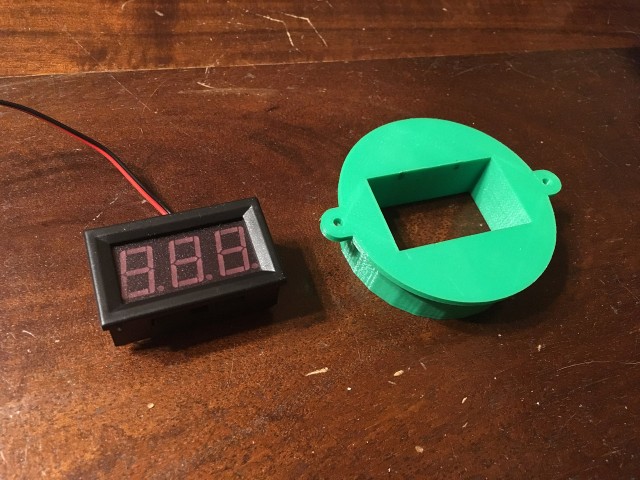
If you’ve ever used a potentiometer you know it can only turn so far. About 270 degrees of rotation is what you get out of most potentiometers, which is plenty. The problem with using potentiometers in museum exhibits is that while adults (typically) know that when the knob stops turning you should stop turning the knob, kids don’t always know this. Kids are notorious for going too far when it comes to physical controls.

So I’ve been working on a way to use potentiometers in an exhibit, but hide them down below in the cabinet, and expose a control knob to the surface that has limited rotation. About 220 degrees of rotation. I could do more, but the idea of using less than 270 is the key. If we don’t get too close to the beginning or end of the rotation limit, we should be able to prevent the potentiometer from being twisted too far and becoming damaged.

I drew up the parts needed to build an encased knob with a hard stop inside. In the final version the knob will be machined from HDPE plastic using a CNC router. I opted to 3D print the pieces for the prototype because it was quick and easy. (“Quick” is relative, of course, but I finished up the drawing and got the model printing at the end of the day, so the printer did the work overnight while I wasn’t there.)

I drew all the pieces in Inkscape and then exported DXF files and brought them into OpenSCAD and extruded them to 1/4″ high. There’s a 1/4″ hole in a few pieces (and a slightly larger hole in the bottom piece) so that a 1/4″ steel shaft can be inserted. The shaft will be connected to the potentiometer. (I made a 3D printed prototype of that too, which you can see here and here.)

Here’s an exploded view of the assembly. Sometimes it’s tricky to design things like this using flat 2D shapes in Inkscape, but I’ve gotten used to it, and I think I’m pretty good at it. I should mention I also printed a paper prototype to help figure things out along the way. (And yes, the original plan was to laser cut the pieces out of foam core which would have made the most sense, but the laser cutter was not available when I did this.) The fact that I created 3D models did allow me to make the nice exploded view very easily.

Here’s a quick assembly using hot glue. Just to test how it worked, as well as get a feel for the size of it. (I’ll have a follow-up post about the layout of the whole panel.)

HDPE can’t really be glued, so we use screws (hidden when possible) to attach layers. We may be able to get away with fewer layers than I used here, because I used 1/4″ layers, but it might make sense to use 1/2″ or 3/4″ layers since we often get HDPE in those thicknesses. And of course we can pocket things out, and not just use a flat stack. (Again, this is a prototype.)



















